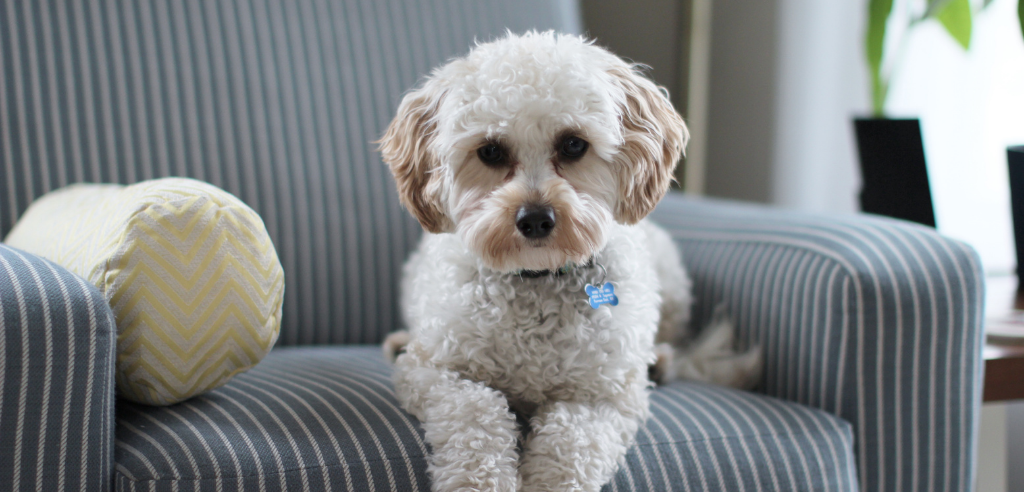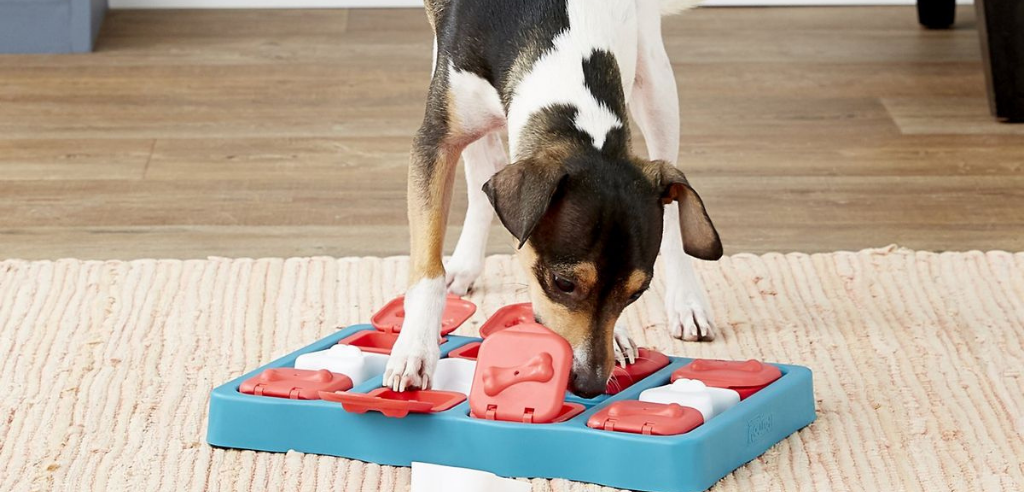Mental Health Awareness Week takes place every May and it’s a great reminder that our mental health is just as important as our physical health.
It may surprise you to learn that just like us humans, our dogs can often suffer from poor mental health too. In fact, it’s estimated that up to 70% of dogs will suffer from anxiety at some point in their lives, most commonly fear, separation and noise anxiety. Spaniels, Poodles, Labradors and Collies are some of the breeds most likely to develop anxiety.

As owners, it’s our duty to do everything we can to ensure that our dogs are as happy and healthy as possible and this includes both their physical and mental wellbeing. But what exactly can owners do?
Here are our five top tips for improving your dog’s mental health…
Recognise the signs of stress
Before you can do anything to improve your dog’s mental health, you first need to know the signs to look out for that they might be stressed or suffering from anxiety.
The quickest way to know if your dog is stressed is to look at their body language. The things to look out for include:
- Lip licking
- Yawning
- Tail low and tucked between their legs
- Ears back
- Tense face muscles
- Crouching low to the ground and making themselves as small as possible
- Shaking
If your dog is suffering from generalised anxiety, common signs to look out for include:
- Sudden changes in their behaviour such as an increase in licking and scratching
- Destructive behaviour, this is most common in dogs suffering from separation anxiety
- Lack of appetite
- Increased howling, barking, whining, etc.
- Digestive issues, including changes to their poo or going to the toilet inside the house when they are toilet trained.
Now you know the signs to look out for, here’s what you can do to help ease their suffering.
Make sure they are getting enough exercise
As the saying goes, a tired dog is a happy dog. So, if your dog isn’t getting enough exercise, it can result in them becoming bored and restless. A good daily walk, an intense game of fetch or something more fun like an agility course can help your dog unwind and feel relaxed.
If you’re worried that your dog isn’t getting enough exercise, using a tracker like Pawfit is an easy way to monitor their daily activity and make sure they are reaching their fitness goals for their mental wellbeing.
Provide them with mental enrichment
Like us humans, our dogs can get bored and this can lead to increased levels of stress and anxiety, and destructive behaviour around the home. Stimulating your dog’s brain will leave them mentally tired and felling satisfied and so less likely to feel stressed and anxious. Mental enrichment comes in many forms and it’s worth trying out a few different things to see what your dog enjoys the most.
Mental enrichment activities include:
- Sniffing – whether this is giving your dog extra time to sniff on their walk, or using their nose to find treats on a sniff mat or ones hidden around the home, 15 minutes of sniffing is said to be the equivalent of 60 minutes of physical activity!
- Licking – Licking is a very calming activity for dogs so try spreading something tasty on a lick mat for them to enjoy
- Puzzle toys – these come in a range of difficulty levels and encourage your dog to use their nose and brain to find tasty treats

Ensure they have a happy home environment
Creating a calming and relaxing home environment for your dog can reduce the chances of them developing stress and anxiety. For example, if your dog is noise reactive, playing white noise can help drown out the distressing noises or if they are fearful of strangers in the home, create a cosy den in a different room for them to escape to when they need a break.
You can also trying plugging in a calming diffuser like this one by Adaptil, which releases calming pheromones into the air, similar to those released by their mothers, and has been proven to reduce anxiety and stress signs by 90% after prolonged exposure.
Take them to the vets
For dogs, physical and mental problems can often be linked and it might be that the cause of your dog’s stress and anxiety is due to an injury causing them pain or an undiagnosed illness. Speaking to your vet to rule out any physical causes can be the first step in helping to ease your dog’s suffering. If there is no physical cause for your dog’s anxiety, your vet may recommend working with a behavioural specialist or that your dog would benefit from being on anti-anxiety medication.



